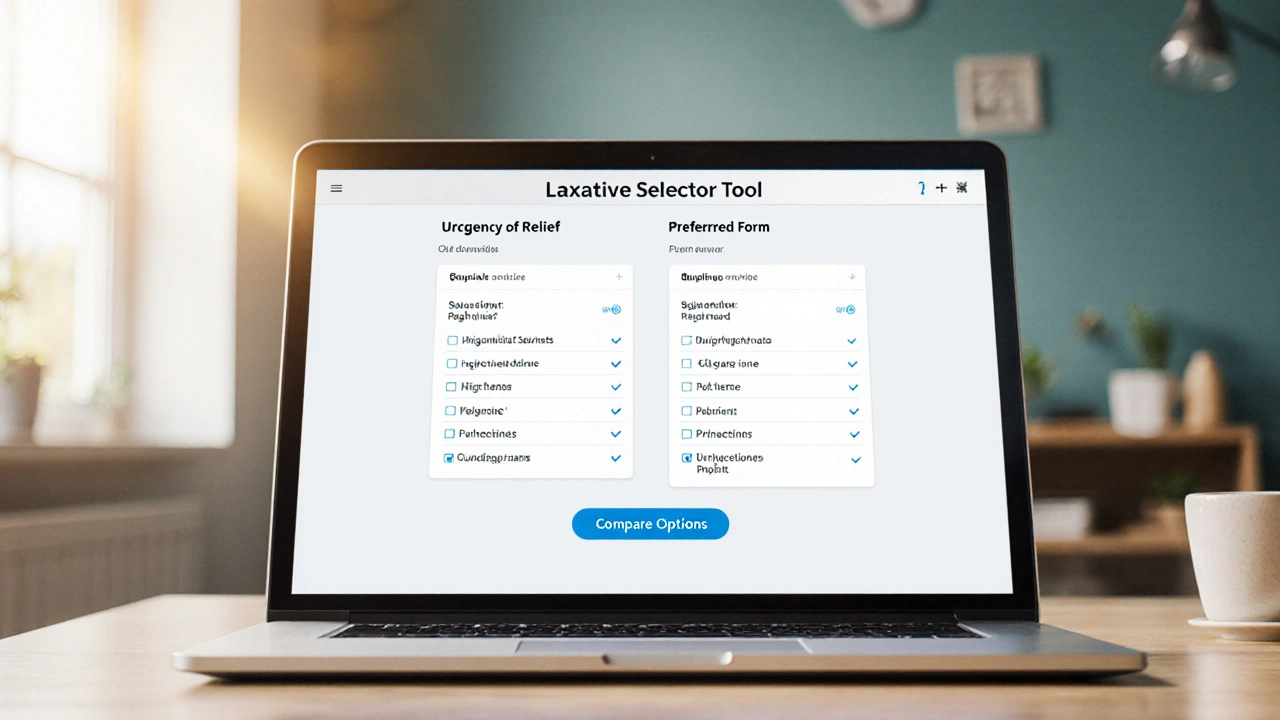Alternative Laxatives: Natural Options for Gentle Relief
When dealing with alternative laxatives, non‑prescription solutions that help move the bowels without harsh chemicals. Also known as natural laxatives, they are popular among people who prefer milder, diet‑based approaches to constipation. Fiber supplements, soluble or insoluble fibers that add bulk and water to stool are a go‑to choice, while osmotic laxatives, ingredients like magnesium or lactulose that draw water into the intestines work by increasing fluid content. Stimulant laxatives, agents such as senna that trigger intestinal muscle contractions offer a quicker kick when needed. Together, these options form a flexible toolkit for everyday gut health.
Key Categories of Alternative Laxatives
The central entity, alternative laxatives, can be broken down into three main families. First, fiber supplements act by adding bulk, which stimulates the natural peristaltic wave of the colon. Common examples include psyllium husk, methylcellulose, and wheat bran; each has a slightly different texture but shares the goal of increasing stool weight. Second, osmotic laxatives rely on a chemical gradient: compounds like magnesium citrate, polyethylene glycol, and lactulose pull water from surrounding tissues into the bowel, softening stool and making it easier to pass. Finally, stimulant laxatives contain plant‑derived compounds that irritate the lining of the colon just enough to spark a contraction, helping move things along when other methods fall short.
Understanding how these three families differ helps you match the right tool to your situation. If you’re looking for a daily habit, fiber supplements fit best because they support regularity over the long term and also improve heart health. When you need short‑term relief without adding bulk, osmotic agents are handy; they work within a few hours and are gentle on the gut lining. Stimulant laxatives should be reserved for occasional use, as the colon can become dependent on the irritation signal if used too frequently. The choice also depends on personal factors: age, existing medical conditions, medication interactions, and even diet. For example, people with kidney issues should avoid high‑dose magnesium‑based osmotics, while those with inflammatory bowel disease might steer clear of strong stimulants.
Beyond the main categories, several practical tips boost effectiveness and safety. Pair fiber supplements with plenty of water – without fluid, the fiber can actually worsen constipation. Start with a low dose and increase gradually to let your gut adjust. For osmotic laxatives, follow the package instructions; over‑use can lead to electrolyte imbalance. When trying stimulant laxatives, keep the course short (no more than a week) and monitor how your body reacts. Also, consider lifestyle tweaks: regular movement, a balanced diet rich in fruits and vegetables, and mindful hydration all amplify the benefits of any alternative laxative you choose.
Our collection below captures the full spectrum of alternative laxatives, from in‑depth reviews of specific fiber brands to safety guides for osmotic agents and practical advice on using stimulant options responsibly. Whether you’re a newcomer seeking a gentle start or an experienced user fine‑tuning your regimen, the upcoming articles give you clear, actionable information to keep your bowel moving comfortably.

Duphalac (Lactulose) vs Common Laxative Alternatives - Detailed Comparison
Compare Duphalac (lactulose) with common laxative alternatives, see pros, cons, dosage, side effects, and choose the right option for your constipation.
view more